Music and Lyrics: Brian Gorman.
Guitar and Voc: Brian Gorman.
Programming and Engineering by Fred Wilkinson.

Music and Lyrics: Brian Gorman.
Guitar and Voc: Brian Gorman.
Programming and Engineering by Fred Wilkinson.

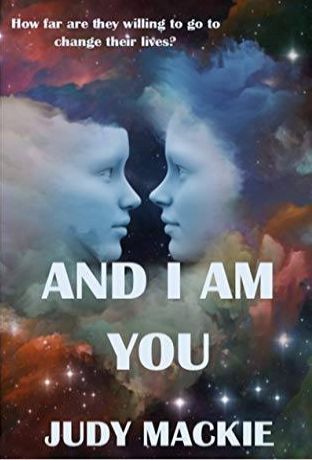 Duncan Harley reviews ‘And I Am You’ – the new novel by Judy Mackie.
Duncan Harley reviews ‘And I Am You’ – the new novel by Judy Mackie.
Layla is a splendidly timeless song penned by Eric Clapton and co-songwriter Jim Gordon of Derek and the Dominos fame.
Inspired by an Arabian love story – Layla and Majnun – Clapton’s song made 27 in Rolling Stone’s list of the 500 greatest songs of all time and won a Grammy in 1993.
Clapton was of course in love with Patti Boyd – the wife of his friend George Harrison.
Clapton and Boyd would eventually marry for a few years and Layla – the song not the lady – would become ranked amongst the greatest rock songs of all time.
They all remained friends. In fact, Harrison attended the Clapton and Boyd wedding and gave his blessing to the unlikely pair.
Lyrics include the immortal lines:
‘Let’s make the best of the situation
Before I finally go insane.’
And now, some decades after the release of Clapton’s Layla, North-east author Judy Mackie, inspired perhaps by the lyrics, has penned a novel deeply rooted in those far-off but timeless events.
In this exquisitely penned Gothic tale a lonely lady, recently abandoned by a long-time lover, examines her life and finds herself in another person’s body.
Judy is of course well known for her stewardship and editing of Leopard Magazine and her love for all things North-east comes through strongly in this, her dark debut novel. And I Am You is set variously along the North Sea coastline with locations as diverse as Cruden Bay, the massive blowhole of the Bullers of Buchan and the tarry-sheds of Fittie.
Betrayed and abandoned by her husband and with a career in the doldrums thirty-eight-year-old academic Layla Sutherland longs to escape her shattered existence while half a world away, Australian journalist Stevie Nightingale is desperate to shed her identity.
A ground-breaking procedure developed by an Edinburgh neurosurgeon, Professor Blunstone, offers both Layla and Stevie salvation in the form of not just an identity swap, but a full-blown body swap.
The eccentric professor has discovered a previously unknown portion of the brain which, when transplanted, offers the subject the possibility of switching bodies whilst retaining consciousness within the new host.
His discovery of the ‘Me Gland’ throws up both moral and ethical dilemmas but, in the true traditions of eccentric scientist tales, nothing can halt the pursuit of knowledge and once the taboo of using humans for experimental purposes is broken, there is ultimately no easy way back from the unspeakable brink.
“He’s not mad and he’s not evil,” says Judy,
“he thinks he’s furthering human knowledge.”
And I Am You, aside from being set in Bram Stoker territory, has all the elements of a contemporary Gothic thriller. A vast baronial mansion occupied by an obsessed researcher hides a secret hospital wing within sound of the Buchan coastline while two damsels in distress agree to help him crack the age-old secret of the seat of consciousness.
What could possibly go wrong and what might be the ultimate cost of tampering with our sense of self?
As medical ethics go out the window, Layla finds herself inhabiting Stevie’s body while retaining her own identity. Likewise, Stevie inhabits Layla’s body. At first all seems smooth and, alongside a practical exploration of the reality of the situation, elements of conflict creep in.
Layla for example meets up with errant spouse Calum, but in the body of the blonde-haired Stevie. Things, to say the least, become complicated.
Will Buller the dog sort out who is who? What will the subjects experience when, or perhaps if, the body-swap is reversed? Who, or what, is the mysterious stalker?
Blunstone makes clear early on that:
“Quite clearly, body swapping is not for everyone. But for those of a certain mindset the opportunity to occupy someone else’s body is surely the most profound experience a human being could have.”
As I raced towards the final pages of Judy’s novel, I began to wonder if the eccentric professor’s premise that body swapping is not for everyone might be slightly off the mark. After all, who amongst us hasn’t imagined what it might be like to be in someone else’s shoes?
And I Am You – by Judy Mackie (289pp) is available for download from Amazon Kindle at £4.99
Duncan Harley reviews Snow White and the Seven Dwarfs @ His Majesty’s Theatre, Aberdeen.
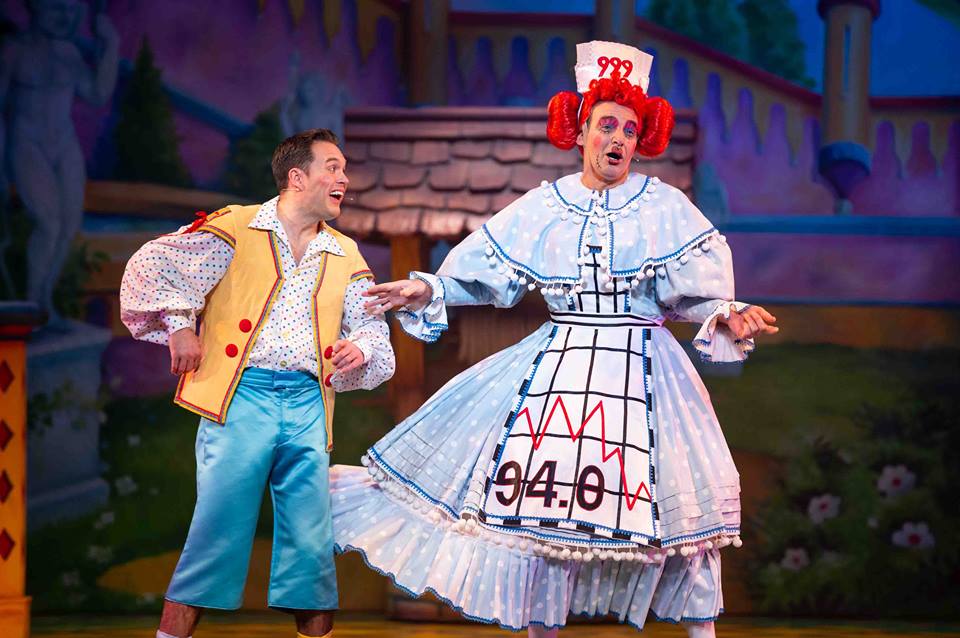 The traditional folk tale of how the beautiful Snow White survived the evil queen’s murderous attention has been told in many versions over the centuries.
The traditional folk tale of how the beautiful Snow White survived the evil queen’s murderous attention has been told in many versions over the centuries.
Countries across the globe from Albania to Malaya hold versions of the tale deeply rooted in popular culture.
In an Indian take on the story, the magic mirror is portrayed as a talking parrot and an Albanian version has Snow White’s jealous sisters portrayed as a murderous duo intent on her untimely demise.
The Brothers Grimm are often credited with having collected the definitive version of the story. Featuring seven unnamed dwarfs, a glass coffin and an insanely jealous stepmother they published several versions of the tale over the period 1812-1854.
In 1937 the tale was subjected to Disneyfication and, despite Disney having trademarked the name “Snow White” in 2013, the films and the literature continue to follow the snowy-white road.
Ever popular as a pantomime theme the likes of Dawn French, Wendi Peters and even Strictly Star Brendan Cole have played starring roles over the years.
As Snow White and the Seven Dwarfs comes to His Majesty’s for a five-week run, the incumbents of the leading roles are Lee Mead as Prince Harry, Jenna Innes as Snow White, Juliet Cadzow as the evil Queen Lucretia plus of course Jordan Young as Muddles and Alan McHugh as Nurse Nellie MacDuff. Yes, that’s right – Nurse Nellie MacDuff.
Both the Grimm Brothers and Walt would have been surprised at Nurse Nellie’s staring role but, it’s all in the best possible taste; well almost.
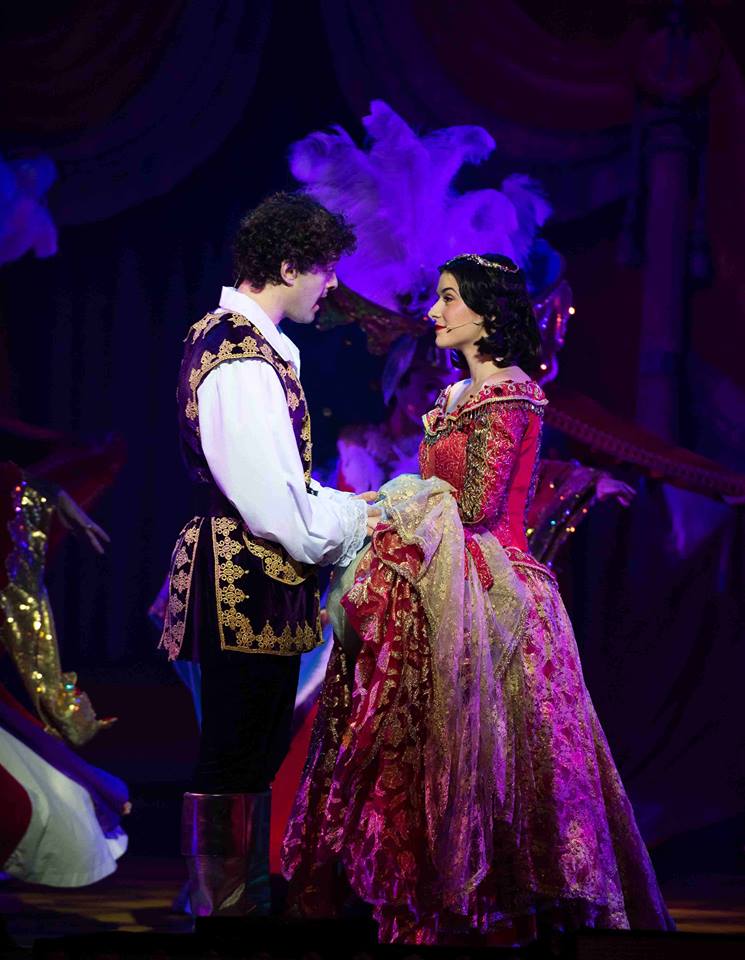 As Alan McHugh’s take on the traditional tale rattles on through endless costume changes – Nellie appears variously dressed as a billiard table, a Heinz Beans advert, a BBQ and wait for it, a fat lady in a tiny bikini; the wonder of panto is exposed to the theatre audience in more ways than one in this production
As Alan McHugh’s take on the traditional tale rattles on through endless costume changes – Nellie appears variously dressed as a billiard table, a Heinz Beans advert, a BBQ and wait for it, a fat lady in a tiny bikini; the wonder of panto is exposed to the theatre audience in more ways than one in this production
Inuendo, double entendre, acrobatics, pyrotechnics and fast paced comedy sketches flow thick and fast as the story of the princess who was far too pretty to live unfolds.
There are no glass coffins in this version of the tale and, if Alan McHugh’s take on the story is to be believed in its entirety, the magnificent seven are named as Snoozy, Fearty, Dafty, Gaffer, Cheery, Snotty and Dreichy.
As is usual in the HMT Panto various celeb’s get to take it on the chin.
Amongst this year’s targets are Donald Trump and Theresa May with the addition of a gag or two about the AWPR, Brexit and of course Holby City – erstwhile home of Lofty AKA Ben “Lofty” Chiltern.
As panto’s go this year’s APA offering certainly delivers a good few belly laughs.
The story bears at least a resemblance to the original tale and the delivery of the traditional fast-paced monologues is, as always, second to none. However, there is a certain flatness and lack of energy about the production.
Perhaps this will pick up during the coming weeks. Additionally, Prince Harry – although pitch perfect in dialogue – appeared to be singing ever so slightly under par.
All in all, though, Snow White and the Seven Dwarfs is a cracking piece of entertainment and should appeal to folk of all ages.
Plus of course, this year some seventy-four towns and villages throughout the North-east, including both Inverurie and Fochabers but somewhat surprisingly not Maggieknockater, get a special mention amongst the gags.
Now that must be something of a record.
Stars: 3.5/5
Directed by Tony Cownie and written by Alan McHugh, Snow White and the Seven Dwarfs plays at His Majesty’s Theatre Aberdeen until Sunday 6 January 2019
Tickets from Aberdeen Performing Arts Tel: 01224- 641122
Words © Duncan Harley, Images © HMT

The idea came to me while watching the late, great David Bowie introduce The Snowman on YouTube, and I wondered what he’d make of the mess we’re being led into, and that things were better for everyone back then.
Lyrics are printed below should you all want to sing along. Enjoy.
1. We’re walking in the air…
we’re floating in the moonlit sky…
The people far below are sleeping as we fly…
2. You’re poisoning the air
And polluting all our minds with lies
And money seems to be the only reason why
3. All across the world
the villages go up in flames…
You’ve exploited all the rivers
The forests and the streams…
Children gaze, open-mouthed
Confused and horrified
To see their parents led away
By a force known as ICE
4. Nobody wants to die
they only want to go to school
But guns are everywhere
Cos of the NRA and you
Children gaze, open-mouthed
Confused and Terrified
All because some think it best
To close their eyes
5. My parents vote for you
Just the way their parents did before
But I will never vote
For fear and hate and war
Here’s to a brighter, saner, happier, freer, cleaner 2019.
– Old Susannah.
Duncan Harley reviews ‘When Brave Men Shudder – The Scottish Origins of Dracula’ by Mike Shepherd.
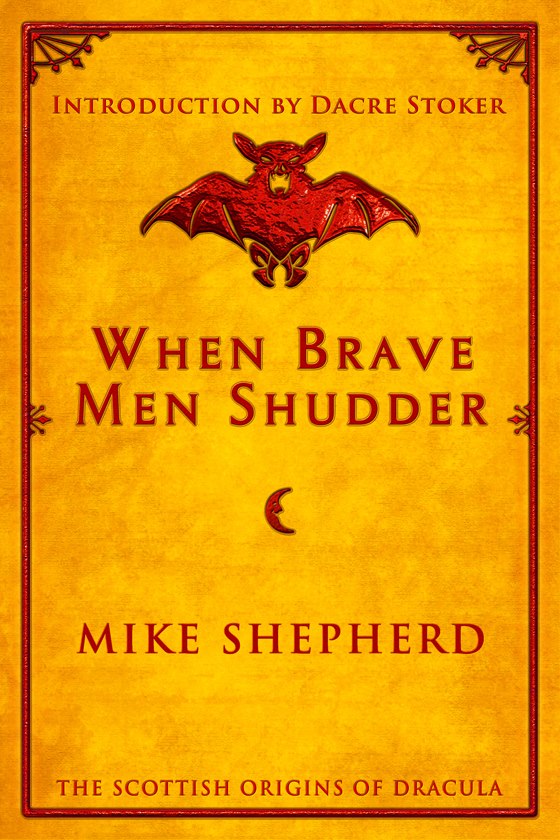 The Whitby Dracula connection is well established and has been extensively written about. Bram Stoker’s life and times have also been well documented. But until now, the story of how Stoker came to pen possibly the most talked about gothic novel in history whilst on vacation in and around Cruden Bay has been largely unknown.
The Whitby Dracula connection is well established and has been extensively written about. Bram Stoker’s life and times have also been well documented. But until now, the story of how Stoker came to pen possibly the most talked about gothic novel in history whilst on vacation in and around Cruden Bay has been largely unknown.
Outwardly of course, Cruden Bay is just one of many coastal villages which dot the Aberdeenshire coastline. Claims to fame include a connection with Norwegian aviator Tryggve Gran, who took off from the local sands on an epic flight over the North Sea to Stavanger in the July of 1914.
Then there is the story of the Cruden Bay golf hotel where, for a few years at least, the rich and the famous came to relax and take in the sea air along the links.
Think Jeremiah Coleman of mustard fame and the families associated with Swan Vestas, Horlicks and Bovril.
There were vague tales about how Bram Stoker and his family had spent a few holidays in the area and the local hotel could point to an entry in the guest book written by Stoker and promising to come again.
But, until now, no one had really taken time to research the story and until now, no one had drawn together the multitude of recollections and solid clues which make up the story of how Dracula came to be written in a largely unknown coastal village on the North Sea coastline.
With an introduction by Dacre Stoker, Mike’s new book is brim full of bite-size facts and with a cover based on an original circa 1897 Dracula edition this is clearly a book to get your teeth into. Well, that’s the vampire puns dealt with so onto the content.
Penned in plain language and meticulously researched, When Brave Men Shudder makes for a fascinating read.
Not only has Mike tracked down the various visits, there were thirteen at least, which Stoker made to the area; but he has traced the links between the man’s writings and the local community at Cruden Bay.
Local lore and superstition backed by an interest in the writings of Emily Gerard – who explored long-held Pagan beliefs flimsily shrouded by a ‘surface varnish of Christianity’ in Transylvania – must, says Mike, have excited Bram enormously.
Mike continues:
“In contrast to the peasants of Transylvania, the residents of Port Errol didn’t believe in vampires and had probably never seen a bulb of cultivated garlic. Nevertheless, the similarities between the two widely separated cultures were evident.”
Stoker of course stumbled upon Cruden Bay, then known as Port Errol, completely by chance. Seemingly he had heard that the Aberdeenshire air was “very bracing” and in a quote from the man’s diaries Mike relates that when he first saw the place, he had fallen in love with it.
“Astonishing as it might seem” writes Mike,
“this little-known Aberdeenshire fishing village with a population of 500 was about to change his life forever.”
Many of the landscape features which to this day inhabit the area would have been completely familiar to the Dracula author and Mike’s local knowledge, he lives in Cruden Bay, and careful research has identified landmarks which appear in Bram Stoker’s writings.
Sand Craig, an offshore rock, features in an early short story and the Scaurs – a jagged outcrop – seems to have fascinated the Gothic author.
Stoker apparently stared at the Scaurs for hours on end and may have explicitly referred to them in the Dracula tale:
“it needed but little effort of imagination to think that the spirits of those lost at sea were touching their living brethren with the clammy hands of death … “
When Brave Men Shudder is full of such references neatly linking Stoker’s Cruden Bay experience to passages in his writing.
Of course, it wasn’t all about the writing. Bram and his wife Florence formed sound links within the local community. Indeed, it seems that the locals took to him.
Long after his death one resident was recorded as saying that:
“Bram had a fine sense of humour always joking about something.”
While another recalled that:
“he became a familiar figure with his stout walking stick as he strolled along the sands and the cliffs.”
In essence, this new take on Bram Stoker is both surprising and occasionally scary. Scary because the portrait painted of the man who penned Dracula is that of a family man on a mission to explore that dark side of humanity which most only dream about.
Although the villagers portray him as a genial gent with a sturdy walking stick, his wife and child often became fearful of his moods and occasional outbursts. Perhaps a lifetime spent amongst actors had enabled him to immerse himself in his stories to the detriment of those closest to him.
As for surprises, it seems that Bram wrote extensively in the Doric, was married to a lady who had previously had a fairly serious relationship with Oscar Wilde and never really made much money from that book which, to this day, remains both a Hollywood staple and an international best seller. Who would have thought!
Stars: 5/5
When Brave Men Shudder – The Scottish Origins of Dracula is By Mike Shepherd and is published in paperback (244pp) by Wild Wolf Publishing @ £12.99
Craig Chisholm reviews True North 2018. Photographs by Craig Chisholm.
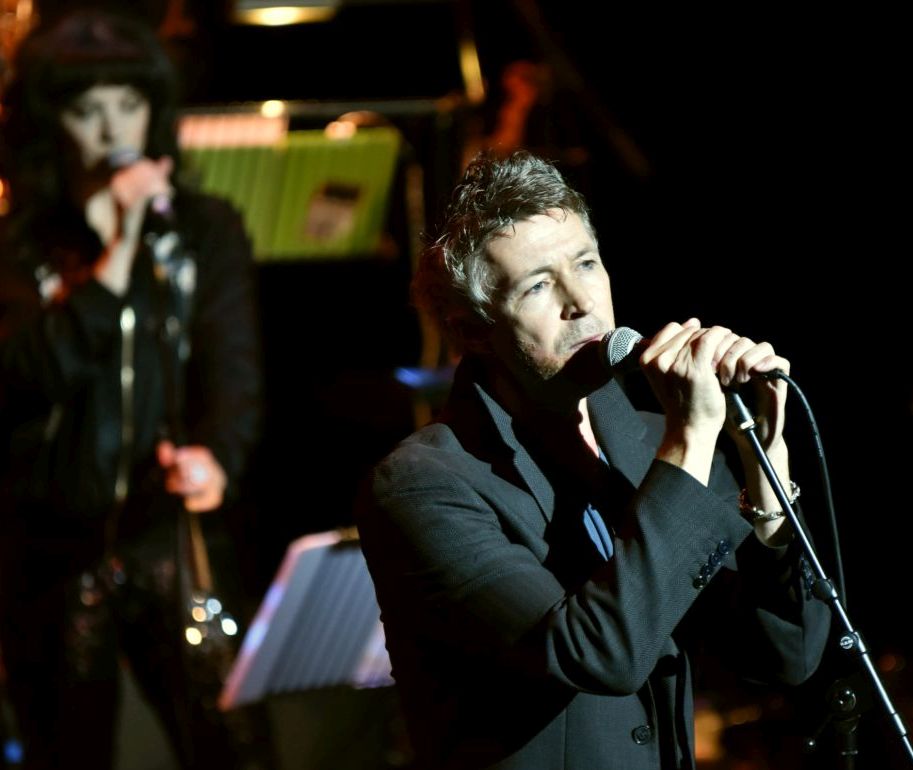
Game Of Thrones’ Aiden Gillen pays tribute to the ‘Thin White Duke’ with David Bowie tribute, ‘Lady Stardust’.
True North returned once again to the heart of Aberdeen with another exciting bill that boasted an eclectic range of artists, a variety of venues, screenings of movies, informative talks and appreciative audiences over its four days.
The best new talents and hotly tipped newcomers shared stages with old pros and veteran performers – and even a ‘Game of Thrones’ star who was there to pay tribute to the late, great David Bowie.
Kicking off on the Thursday night, the Lemon Tree hosted an opening concert that boasted some of the best up and coming Scottish talent.
 Opening the night, Glaswegian Zoe Graham provided a low key, intimate performance.
Opening the night, Glaswegian Zoe Graham provided a low key, intimate performance.
Aided only be an acoustic guitar and her voice this was a display of a mature and introspective talent that’s unusual and impressive for a such a young performer.
Eclecticism was the defining theme of the night as the next two acts explored different musical paths.
.
 Scottish rapper Solareye – backed on-stage tonight by DJ Harvey Kartel – is the frontman of the hip hop band Stanley Odd.
Scottish rapper Solareye – backed on-stage tonight by DJ Harvey Kartel – is the frontman of the hip hop band Stanley Odd.
His socially conscious lyrical flow gave the crowd food for thought and displayed a unique and absorbing talent that deserves to be heard by a wider audience.
.
.
.
 Final act Man of Moon were a tour-de-force of guitar driven rock.
Final act Man of Moon were a tour-de-force of guitar driven rock.
Their music recalls The Jesus and Mary Chain, Spacemen 3 and a host of krautrock bands. Their droning, feedback drenched wall of noise is absorbing and overpowering, drawing you into their ocean of sound and leaving you exhausted and shell-shocked by the time it’s over.
A fitting end to a wonderful night.
The following night starts with a much more laid back and intense but no means any less absorbing acts as the Tivoli theatre hosts Tracyanne & Danny along with opening act Charles Watson.
 The combination of singer songwriters Tracyanne Campbell (Camera Obscura) and Danny Couglan (Crybaby) works well and their soul-warming, indie pop sound is appreciated by a reverential crowd.
The combination of singer songwriters Tracyanne Campbell (Camera Obscura) and Danny Couglan (Crybaby) works well and their soul-warming, indie pop sound is appreciated by a reverential crowd.
Drawing from their highly acclaimed, self-titled debut album their set was both intimate and expansive, offering heart breaking and personal lyrics that had the crowd absorbed, rapt and appreciative.
.
 Opening for them was Charles Watson.
Opening for them was Charles Watson.
The London based singer / songwriter / producer is possibly best known as the lead singer of indie band Slow Club but he came into himself onstage and gave a great performance that would have won over new fans on the night.
.
.
.
 The Lemon Tree hosted the second of the nights performances.
The Lemon Tree hosted the second of the nights performances.
Kicking off proceedings was Manchester based singer-songwriter Ren Harvieu.
Backed by tonight’s headliners, The Magic Numbers, she runs through an engaging support slot that displays influences of soul, rock, indie and jazzy torch songs.
.
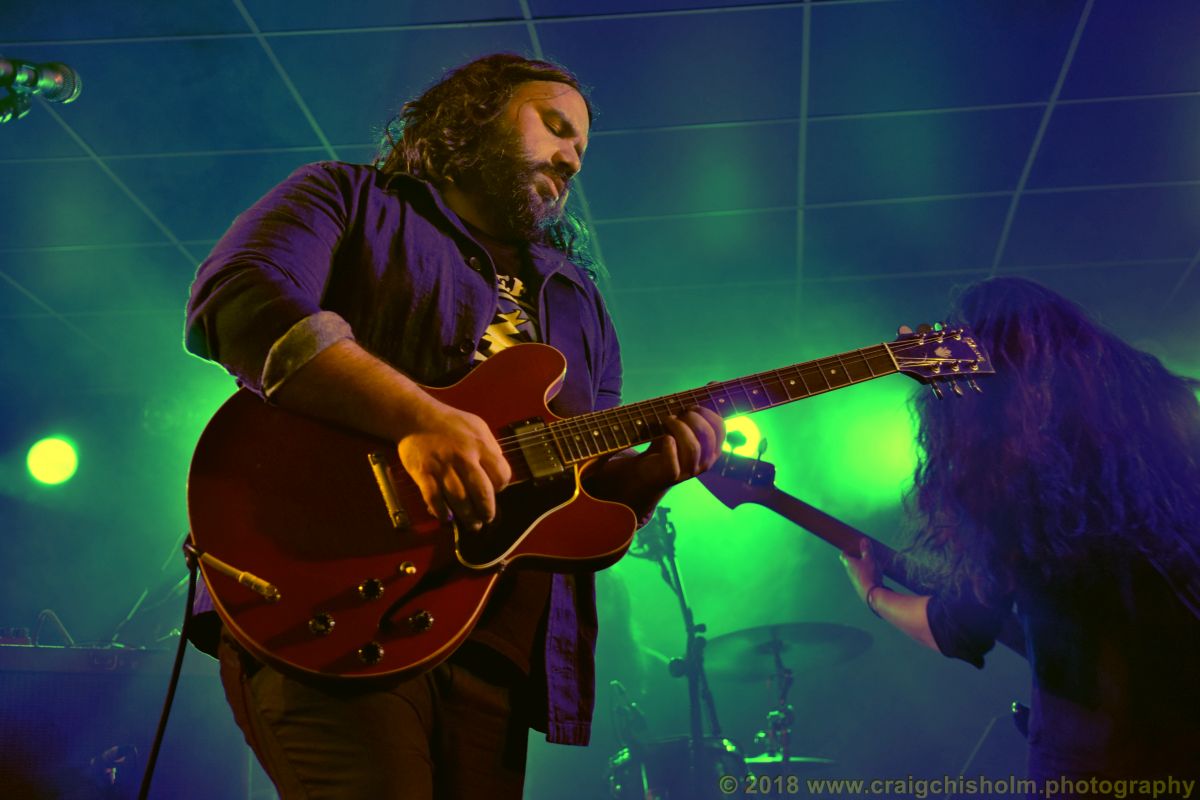 Headline act The Magic Numbers have a wealth of material to draw from.
Headline act The Magic Numbers have a wealth of material to draw from.
Their late-night slot keeps the crowd on their toes and out of their beds as they pull out Top 40 hits such as ‘Forever Lost’, ‘Love’s a Game’ and their biggest hit ‘Love Me Like You’.
.
.
If there was ever a case of opposites attracts then Saturday nights pairing of the stately, grandeur of His Majesty’s Theatre hosting the feedback heavy, post rock of Mogwai and the apocalyptic electronica of Blanck Mass was it.
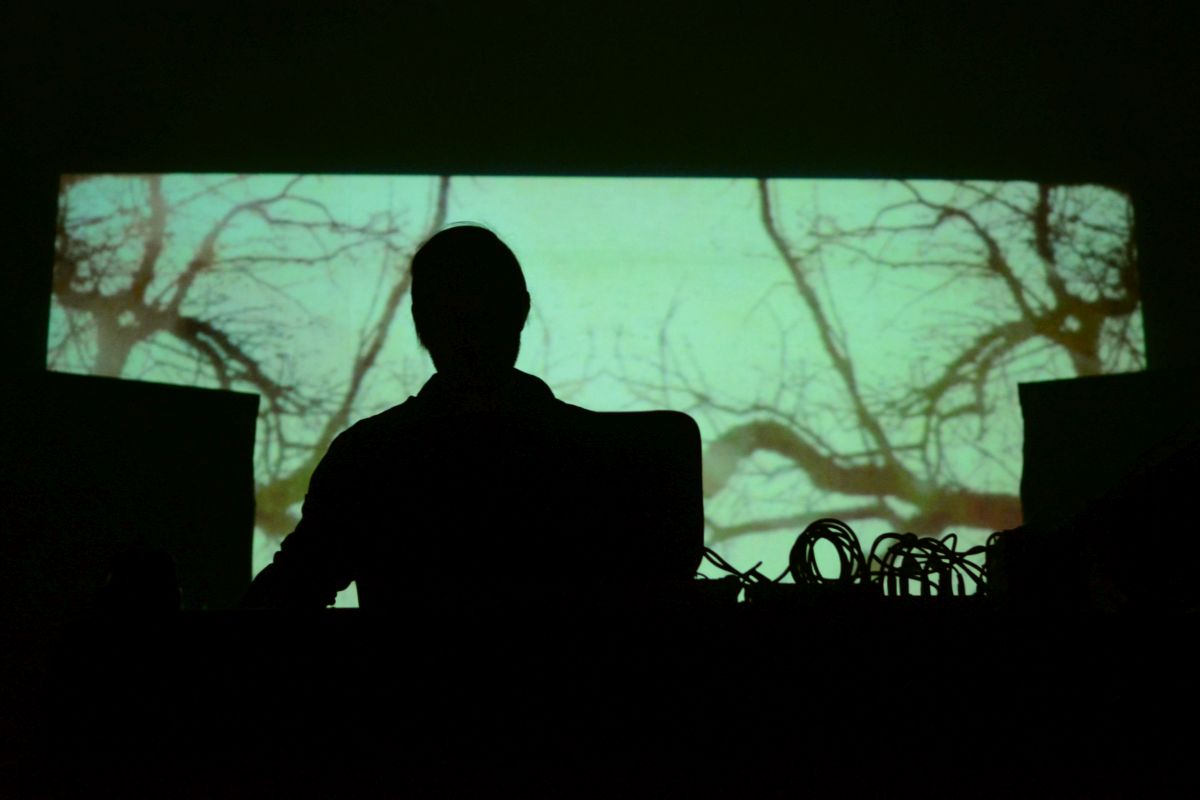 Blanck Mass are not an easy listen.
Blanck Mass are not an easy listen.
It’s a punishing yet rewarding set that sole member Benjamin John Power performs whilst hidden in virtual darkness with only a screen displaying fractual, confusing and trippy images behind him.
But beneath the pulverising noises are rewarding harmonies and hints of melody – they’re not easy to find at times but are rewarding to the listener that does.
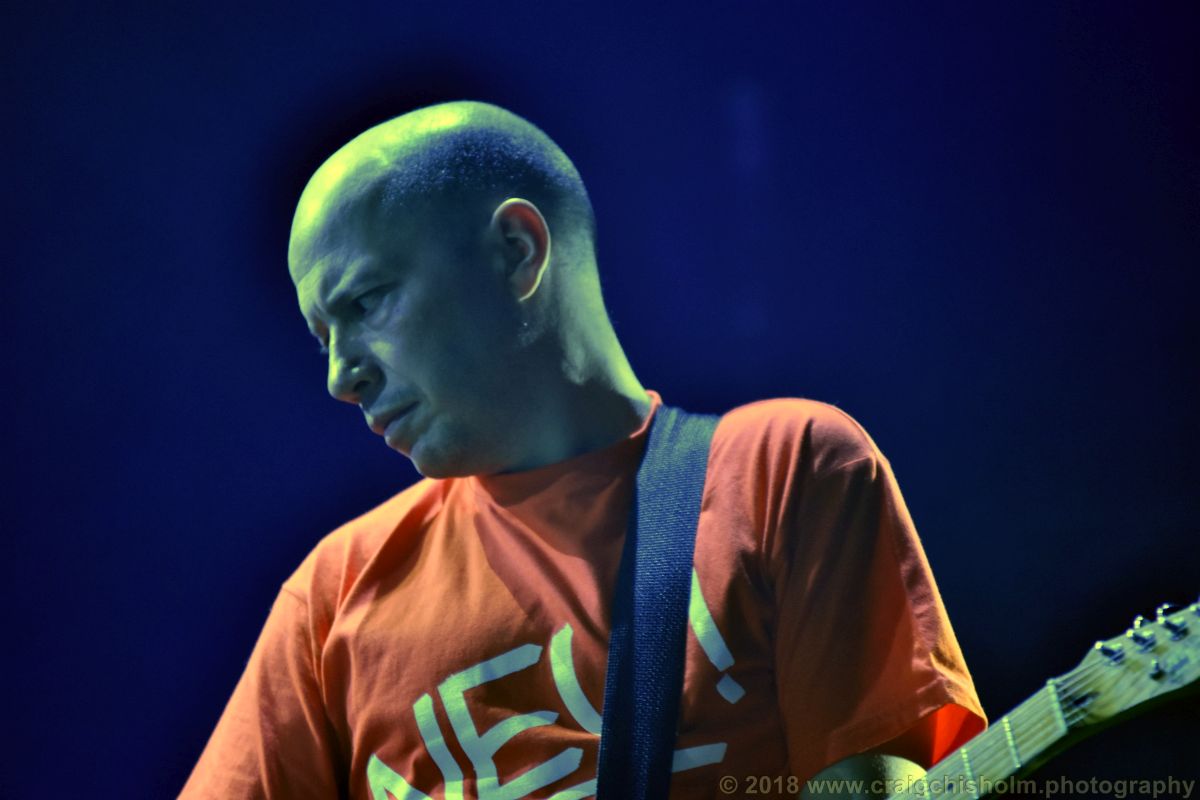 Mogwai also have beautiful and harmonic melodies but unlike Blanck Mass they’re not always as hidden. Their elegant, engaging, compositions are counteracted by ferocious, feedback driven guitars in what must have been the loudest act to tread the boards of the HMT.
Mogwai also have beautiful and harmonic melodies but unlike Blanck Mass they’re not always as hidden. Their elegant, engaging, compositions are counteracted by ferocious, feedback driven guitars in what must have been the loudest act to tread the boards of the HMT.
Effortlessly one of the greatest and original talents to emerge from Scotland in the last two decades their revelatory live performances deserve to be seen at least any music fan at least once.
Their ear-splitting volume is balanced beautifully with moments of solace and breath-taking beauty – it’s an amazing performance by the Glaswegian band.
After those pulverising and draining performances it might have been preferable for some to have headed home for a lie down in a dark room to recover, but the Lemon Tree still had something to offer for those with still functioning ear drums.
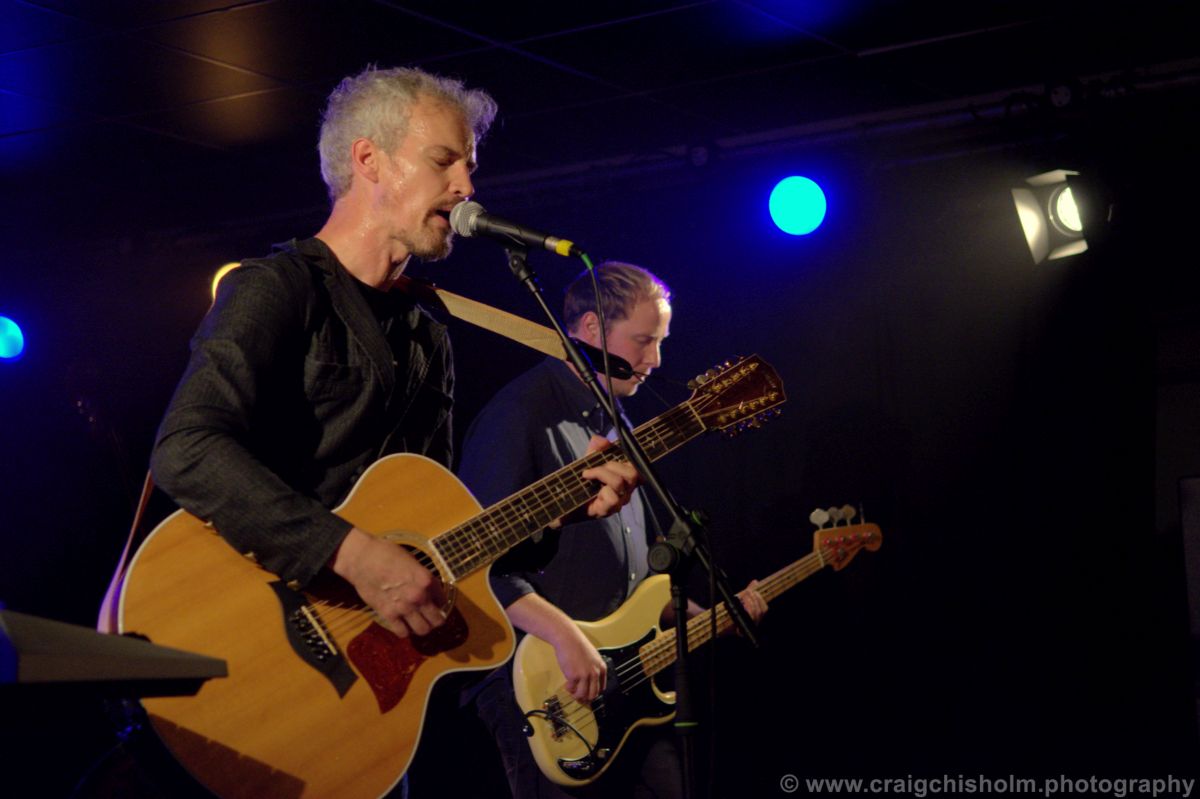 Singer Colin McIntyre has performed as Mull Historical Society since the turn of the 21st Century and his music is still as fresh and heart-warming now as it was then.
Singer Colin McIntyre has performed as Mull Historical Society since the turn of the 21st Century and his music is still as fresh and heart-warming now as it was then.
The multi-talented McIntyre – singer, songwriter, playwriter, author – gives a wonderful show that draws heavily from his latest album ‘Wakelines’ as well as early hits such as ‘The Final Arrears’, ‘Animal Cannabus’ and ‘I Tried’.
It’s a great performance and he’ll be back at The Lemon Tree next year with a band that will feature none other than former Suede guitarist in its ranks. Don’t miss him.
 Opening for Mull Historical Society is up and coming artist Emme Woods. Her mix of blues, rock, grunge and good old fashioned strong song writing displays a depth of talent that is inspiring to see in someone aged only 23 years.
Opening for Mull Historical Society is up and coming artist Emme Woods. Her mix of blues, rock, grunge and good old fashioned strong song writing displays a depth of talent that is inspiring to see in someone aged only 23 years.
She may be one of few acts – if not the only – that has a family pet on stage. Nestled on a fur coat to Woods’ left is her dog, Bubbles, who is comfortable enough with the performance to enjoy a snooze during the set.
Hopefully no one else in the crowd had a sleep as they’d have missed a strong performance by someone who is sure to go on to bigger things.
 The fourth and final night of the festival still has a couple of big shows to go.
The fourth and final night of the festival still has a couple of big shows to go.
The Lemon Tree provides the late-night setting for Glaswegian indie stars Glasvegas.
The band power through a set that revisits their classic debut album from start to finish that gives the crowd a nostalgic but entertaining finale to the weekend.
.
The big, star-studded show of the weekend happens earlier in the evening, however, at His Majesty’s Theatre.
 ‘Lady Stardust – Camille O’Sullivan and friends present the Music of David Bowie’ is a majestic and life affirming show that draws in a crowd of all ages and backgrounds, proving how timeless and all-encompassing the Thin White Duke’s music was.
‘Lady Stardust – Camille O’Sullivan and friends present the Music of David Bowie’ is a majestic and life affirming show that draws in a crowd of all ages and backgrounds, proving how timeless and all-encompassing the Thin White Duke’s music was.
Irish torch singer O’Sullivan is an inspired host for the evening.
.
Her performance is chameleon-like and theatrical and she takes on the role with gusto, really getting into the spirit of the performance and taking on Bowie’s ability to get into a role and bring the audience with him.
Her choice of friends and peers to accompany her on this journey are eclectic and diverse.
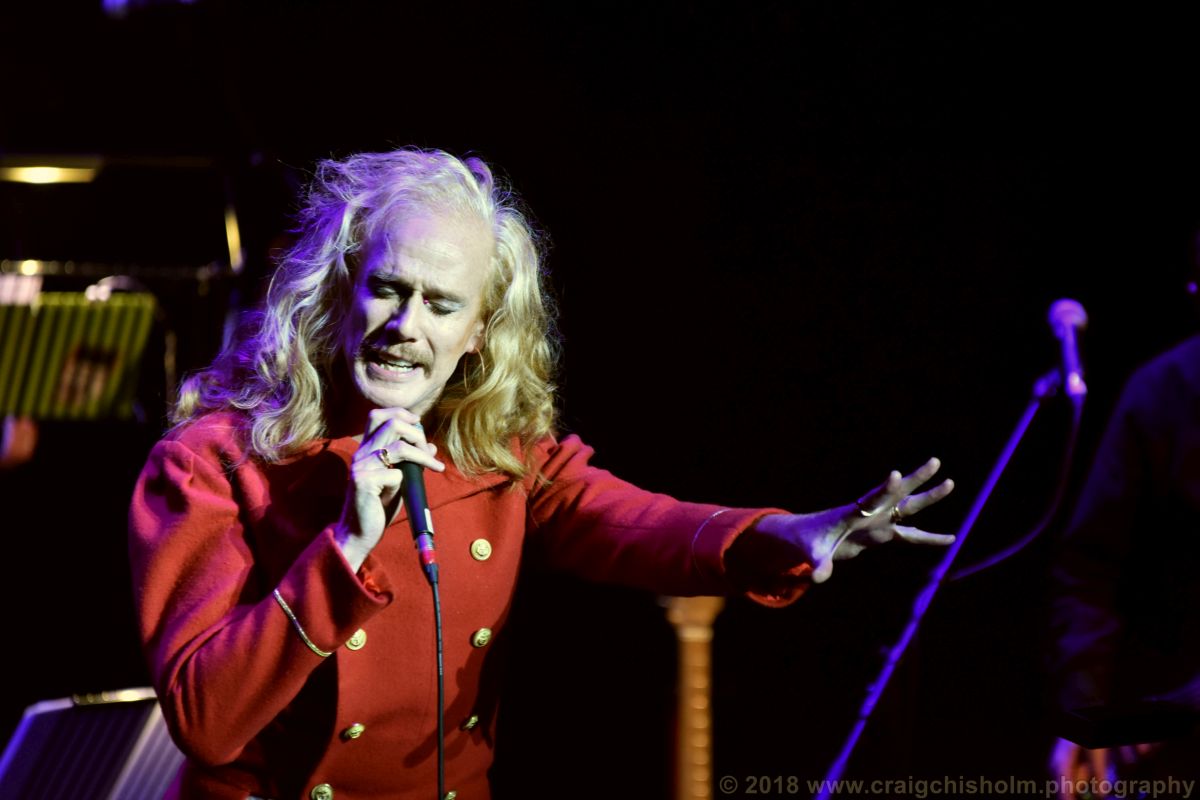 From Paul Noonan, singer with Bell XI, performing ‘Ashes to Ashes’ to folk singer-songwriter Kathryn Williams performing ‘Kooks’ and with performances by ‘Game of Thrones’ and ‘Peaky Blinders’ star Aiden Gillen, pianist Duke Special and Cathal Coughlan from The Fatima Mansions, it’s an evening of sheer joy for Bowie fans old and young alike.
From Paul Noonan, singer with Bell XI, performing ‘Ashes to Ashes’ to folk singer-songwriter Kathryn Williams performing ‘Kooks’ and with performances by ‘Game of Thrones’ and ‘Peaky Blinders’ star Aiden Gillen, pianist Duke Special and Cathal Coughlan from The Fatima Mansions, it’s an evening of sheer joy for Bowie fans old and young alike.
And special mention must go to comedian and writer Christopher Green.
The towering, flamboyant performer gives a show stopping performance that captures the spirit of Bowie.
His performance is revelatory – camp; serious, touching and funny in the space of a 3-minute pop song. A credit to himself and a credit to Bowie, whose spirit he truly captures.
The spirit of the evening truly reflects the nature of True North – an eclectic, interesting, diverse mix of music that crosses all boundaries and showcases a wide-ranging display of talent.
 Duncan Harley shares his experience of the recently opened ‘Carron To Mumbai’ Restaurant in Stonehaven.
Duncan Harley shares his experience of the recently opened ‘Carron To Mumbai’ Restaurant in Stonehaven.
Scotland’s love affair with Indian food knows few bounds. As a Glasgow student many years ago, I variously got to grips with endlessly bland lamb-bhuna styled carry outs following a good few pints of lager.
Various mediocre meals were served up as authentic Indian sub-continent cuisine and we accepted them as the norm.
It seems odd nowadays, but if the consistency varied from one restaurant to another, we moaned.
A McDonald’s style mindset prevailed and the security of a cloak of blandness took precedence.
Thankfully the days of Indian food by numbers are fast ending and the recently opened Carron To Mumbai at Stonehaven is a stunning example of the new enlightenment in Indian cuisine.
I first became aware of the Carron Restaurant a good few years ago. Family visits for birthdays and get-togethers led me there and the place simply blew me away. The food was one thing, but the Art-Deco setting was quite another. Combine the two and, well you get the drift.
Situated on a tranquil back street in Stonehaven, the Carron building has over the decades become an iconic part of the Stonehaven experience.
Originally opened in 1937, the Listed Grade B Carron Restaurant once formed part of the towns Northern Co-operative Society buildings. The Tea Rooms closed in 1968 and subsequently the restaurant area was used as a supermarket store.
The adjoining buildings continued trading as a supermarket until the late 20th century and in around 1999 the building was placed on the open market.
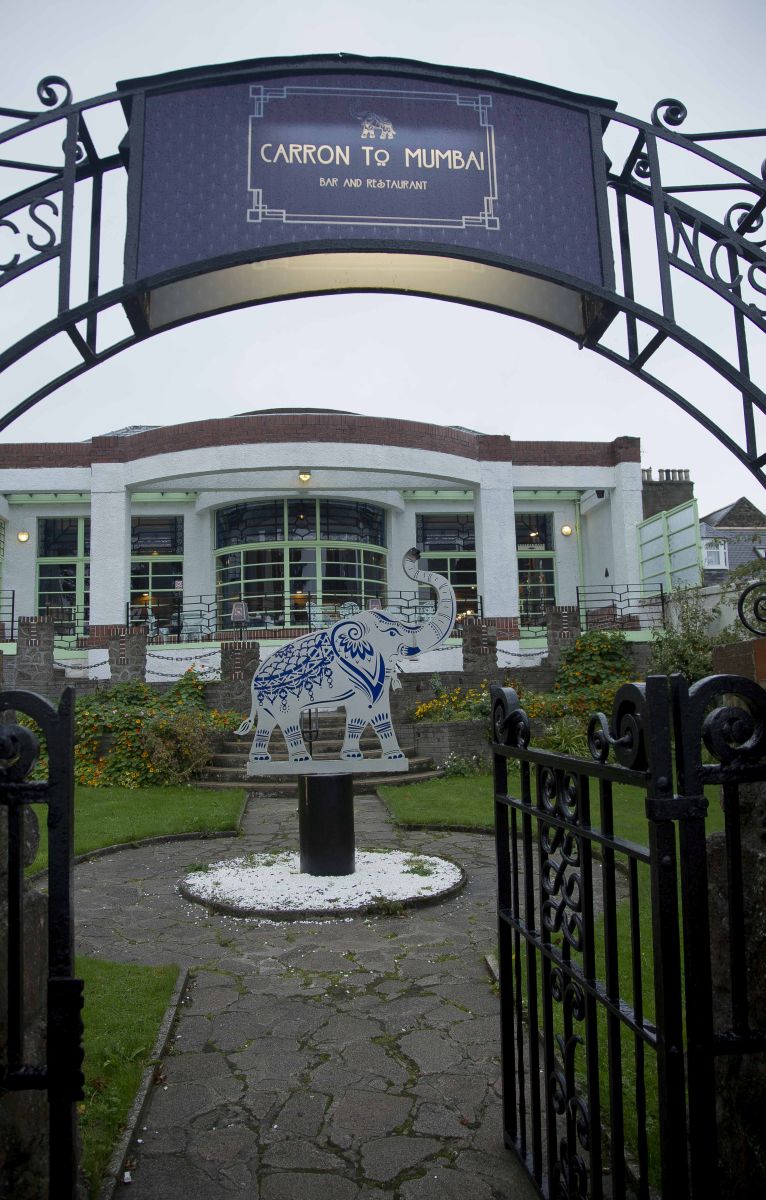 Purchased by a caring local business-man, the premises underwent an extensive but sensitive restoration which, at a cost of somewhere near a million pounds, incorporated many the original art-deco fittings and returned the building to near original condition.
Purchased by a caring local business-man, the premises underwent an extensive but sensitive restoration which, at a cost of somewhere near a million pounds, incorporated many the original art-deco fittings and returned the building to near original condition.
The interior was accurately restored using old photographs and original circa 1935 architect plans.
Replica bow-backed dining chairs were installed and the original, somewhat risqué, Picasso styled glass mirror was re-installed and insured for £150,000.
Re-opened as a welcoming restaurant the building continued to attract diners until March 2017 when it suddenly closed. And now in a fresh re-incarnation, the Carron has been re-born as ‘The Carron To Mumbai’.
Following months of hard work, the Carron building has had yet another sympathetic makeover which, alongside freshening-up the original historic interior, has added what proprietor Syed Abdul Hamid – better known locally as Raj, terms a dining experience second to none.
“I had my eye on the Carron building for several years.” says Raj, who has lived with his family in Stonehaven for fifteen years.
When it became vacant, he immediately expressed interest and after extensive consultation with planners and locals alike he embarked on a journey to re-open the restaurant as a celebration of both Indian and European Art-Deco heritage.
“Art-Deco” he explains, is not just a European architectural style.
“In India there are many fine examples of Art-Deco buildings and Mumbai alone has many fine examples. Just Google it and you will find out more.”
“So why Carron To Mumbai” I asked?
“I decided to take account of what local people wanted.” says Raj,
“Clearly the name Carron is important to Stonehaven folk so I decided to retain the name and call the new restaurant Carron To Mumbai.”
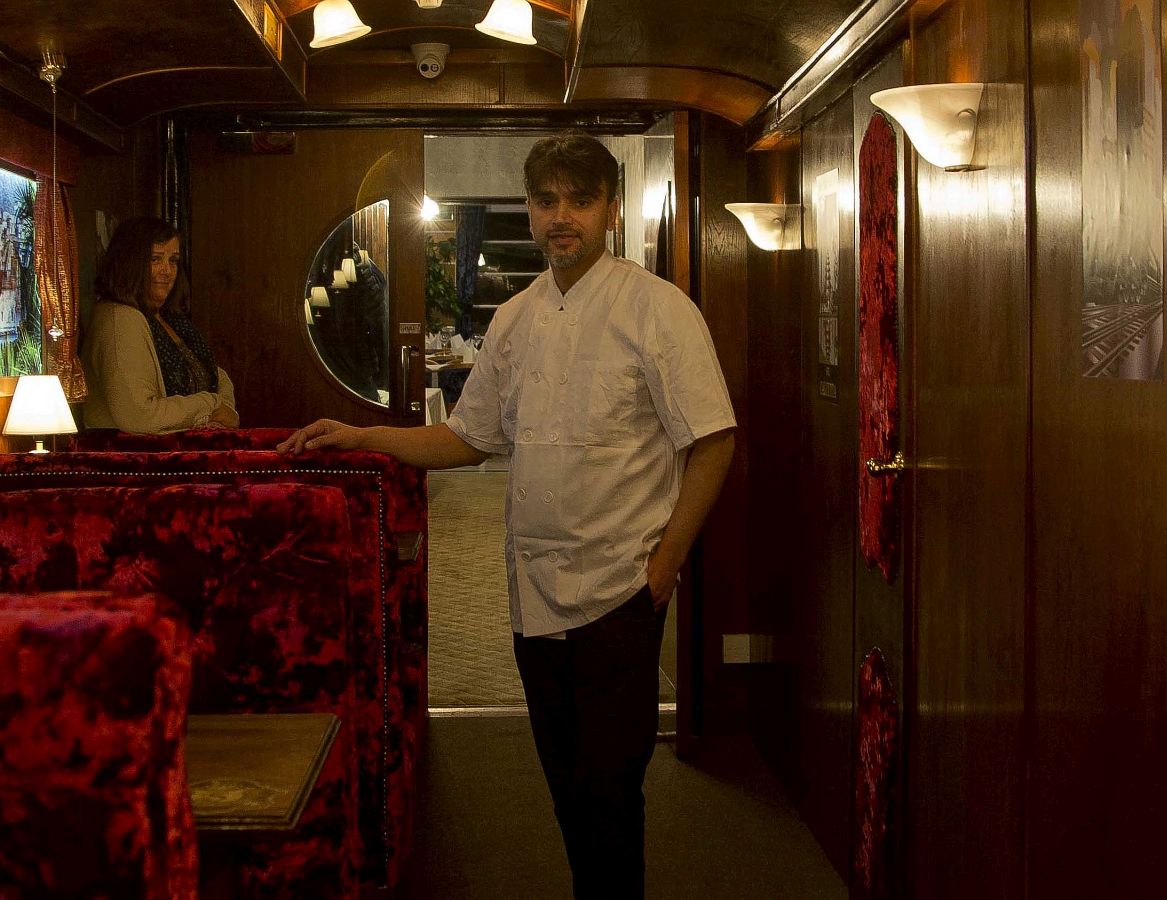 So, part Scottish and part Indian in origin, the building has feet in two camps and that, perhaps is the key to this new and exciting dining experience.
So, part Scottish and part Indian in origin, the building has feet in two camps and that, perhaps is the key to this new and exciting dining experience.
On entering from Cameron Street, the diner is shown to a seat in a replica colonial railway-themed wine bar before entering the Mumbai-themed main restaurant via a quite splendid corridor re-created as an Orient-Express railway dining-car.
Surreal? Yes. Inspired? Also, a big yes!
“Cooking is an art.” says Raj, and he is right.
In many ways Carron To Mumbai resembles an art installation.
Dressed to kill, the main restaurant interior reeks of 1930’s opulence. The original interior has had a gentle makeover. The Picasso mirror still dominates one wall and the magnificent bow-fronted window dominates another.
Facing out to the Carron Water, Raj likens this view to the view over his native Bangladesh.
“It is a country of water.” he says and the view reflects this as does the menu.
Described by Raj as traditional Indian food but with a twist, the main courses are available in many variations. Each dish can be served with a wide selection of fish, meat and vegetable mains. And each incorporates locally sourced produce including herbs grown in the restaurant’s own herb garden.
As Raj explains:
“We don’t buy in anything which is ready made and we absolutely don’t use artificial colourings. Everything is made here, in house, from locally sourced ingredients.”
Monk fish, scallops and sea bass inhabit the menu alongside venison, salmon and duck while more familiar Indian dishes incorporate lamb, chicken and vegetables. Portions are generous but, according to Raj most plates return to the kitchen empty.
Will we visit again? Of course, and Janice is of the same opinion. Where else, after all, can you relax in a colonial railway-station bar over a cocktail before taking a luxury train to an Art-Deco restaurant overlooking the historic Carron Water?
The Carron To Mumbai is at 20 Cameron Street Stonehaven
And on the web @: https://www.carrontomumbaistonehaven.co.uk/
Duncan Harley is author of The A-Z of Curious Aberdeenshire plus the forthcoming title: The Little History of Aberdeenshire – due out in March 2019
Duncan Harley reviews Evita @ His Majesty’s Theatre, Aberdeen.
Margaret Thatcher once said that “If a woman like Eva Peron with no ideals, can get that far, think how far I can get” and she had a point.
The Iron Lady however took several decades to claw her way to the top; Eva took just the one.
Tim Rice and Andrew Lloyd Webber’s Evita first took to the stage in 1979.
A film version followed in 1996 starring Madonna as Evita and Antonio Banderas as Che. With the stage version now pushing forty, the storyline remains controversial. Portrayed as a working-class girl who whored her way out of the slums and exploited the poor, her legacy remains subject to debate.
Hard to ignore however is her undoubted political prowess. Assuming control of the Argentinian Ministry of Labour in 1946, she generously handed out wage increases and promoted women’s suffrage whilst privately embracing a lifestyle lavishly populated with couture clothing and expensive jewellery.
Greats such as Elaine Page and Madalena Alberta have taken on the mantle of the lead over the years and in popular culture, parody has celebrated the role with the likes of Lisa Simpson’s Evita blasting out Don’t Cry for Me, Kids of Springfield to an international audience in the 2003 episode “The President Wore Pearls”.
Latest incumbent in the leading role of Eva Peron is Lucy O’Byrne and if last nights performance at His Majesty’s Aberdeen is anything to go by, she has thrown her heart into the part.
A Dubliner, blessed with astronomically high notes, she was recently quoted as saying that:
“Whatever people say about Eva Peron – that she was selfish, that she was a gold-digger – I am playing her in her story, and I have to make you like her.”
And, this is exactly what she does. As the backstreet girl hustles her way to the top it’s clear that O’Byrne is more than fit for the part.
The role of the new-world Madonna with the golden touch is not an easy one. Expectations are naturally high and its almost a case of the star is dead, long live the star.
But, apart from a few glitches with the sound envelope O’Byrne’s delivery of those huge songs makes muster.
A splendid counterpoint to the, often malevolent influence of Mike Sterling’s President Peron, Glenn Carter’s Che provides comic relief to what is otherwise a fairly dark tale of political intrigue and extra-judicial murder.
Che is slang in Spanish for friend or pal and dressed to the boots in Guevara style combat gear Glen’s Che represents the voice of the adoring masses and gets beaten-up by Peron’s secret police for his efforts.
All the familiar songs are there including of course Oh What A Circus, On This Night Of A Thousand Stars and of course Don’t Cry For Me Argentina. The Evita/Peron duets Dice Are Rolling and I’d Be Surprisingly Good For You are particularly poignant.
As Broadway Director Harold Prince once said, “Any opera that begins with a funeral and ends with a funeral can’t be that bad” and this touring version of Evita would meet with Prince’s wholehearted approval.
Stars: 4/5
Directed by Bob Tomson and Bill Kenwright, Evita plays at His Majesty’s Theatre Aberdeen until Saturday 20th October 2018
Tickets from Aberdeen Performing Arts Tel: 01224- 641122
Words © Duncan Harley, Images © HMT
It’s Dracula season in North-east Scotland as Duncan Harley reviews Dracul by Dacre Stoker and J.D. Barker.
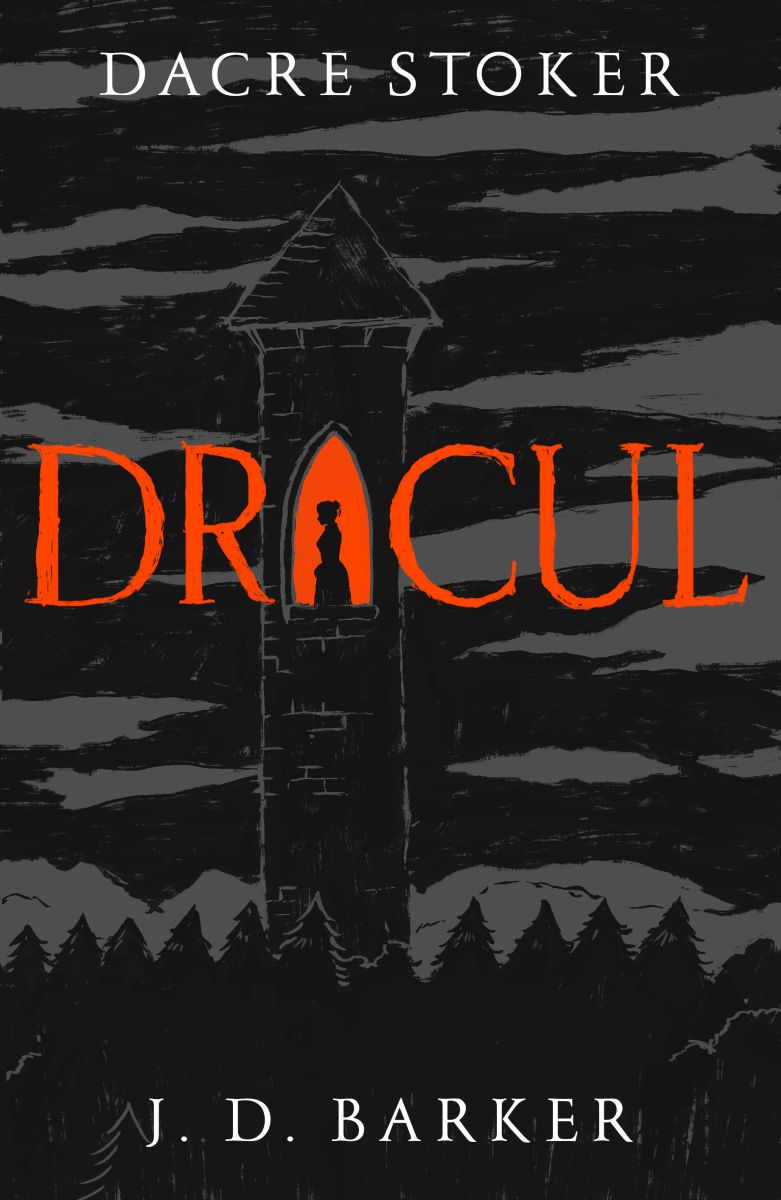 Local writer Mike Shepherd is about to release a new book about Bram Stoker’s Cruden Bay connection and Dacre Stoker – in conjunction with Illinois born writer J.D. Barker – is about to unleash a prequel to Stoker’s Dracula classic.
Local writer Mike Shepherd is about to release a new book about Bram Stoker’s Cruden Bay connection and Dacre Stoker – in conjunction with Illinois born writer J.D. Barker – is about to unleash a prequel to Stoker’s Dracula classic.
Dacre Stoker gave a talk at Cruden Bay in early 2017 and both Janice and I were privileged to attend.
Alongside setting forth some solid ideas about the history and the mythology of vampirism, Dacre let slip the fact that his forbear, Bram Stoker, let loose upon the world that classic of the bloodsucking genre ‘Dracula’.
Indeed, the very venue of Dacre’s mid-winter talk – The Kilmarnock Arms at Cruden Bay – boasts a guest book entry which reads something like:
“Delighted with everything and everybody and hope to come again.”
The signature alongside the entry reads:
“Mr and Mrs Bram Stoker.”
Bram Stoker, author of the Gothic Vampire Horror tale ‘Dracula’, and many other literary sensations, stayed with his wife and son at the hotel for most of that 1884 August. He returned frequently over the subsequent 20 years and wrote at least part of his Dracula tale at Crooked Lum Cottage, one of his holiday homes at Cruden Bay.
There is a strong local belief that his tale of Transylvanian terror was heavily influenced by nearby Slains Castle although Ecclesgreig Castle at St Cyrus and the town of Whitby in Yorkshire also claim to be Stoker’s inspiration. But the jury is still out.
Jointly written by Dacre Stoker and J.D. Barker, the new Gothic novel, ‘Dracul’ makes no pretence at solving the riddle and, in a volume dedicated to ‘finding the roots’ of the Dracula truth, both Dacre and Barker have penned a bold prequel to the Stoker tale.
Bram’s tales probably reflected his early sufferings
Dracul is described in the PR fluff as ‘Scary as hell. Gothic as decay’. And for once, the cover fluff is pretty much near the truth.
Based on notes left behind by Bram Stoker, Dracul is really a fly-on-the wall insider-vision to what really happened.
Stoker is in a room, in a tower armed with various items. A gun, some mirrors and holy water litter the table alongside some plum brandy and a crucifix for fortification. His fevered mind imagines a night to remember and he awaits with some trepidation the inevitable battle with the undead.
Inevitably, the reader is drawn to the suspicion that this early tale reflects at best a dream sequence brought on by some dreadful childhood fever or, at worst, an over-use of some prescription medication.
Imbued with a sickly childhood, Bram’s tales probably reflected his early sufferings and his later associations with theatrical empressario, Sir Henry Irvine could only have augmented the childhood recollections but in a mainly theatrical way.
But, back to the chase … imagine if you will a pre-adolescent Dracula author – in fact Stoker himself – sitting behind a firmly locked door awaiting the arrival of some dreadful apparition.
‘The Journal of Bram Stoker: From my earliest memories, I was a sickly child, ill and bedridden from birth until my seventh year, when a cure befell me. I will speak of that cure in great length to come …’
The indescribable tension will have you hiding your face in your hands at times and the complexity of the tale might draw you to the very edge of your seat. Blood and guts in nature, Dracul is one of those gripping reads which – by its very provenance – is difficult to put down.
All in all, this is a splendidly orchestrated piece of pure Gothic horror told in the style of the master of the art and by writers who have been privileged to access the family archives.
It’s not often that I pen a spoiler. But suffice it to say that Dracul ends with the immortal words:
“I will stay with you always.”
Stars: 4.5/5
Dracul is available in the UK in hardback from 18th October 2018 from Bantam Press @ £12.99
ISBN: 9780593080108
Duncan Harley Reviews The Band at His Majesty’s Theatre, Aberdeen.
Gary Barlow reckons that Take That was Britain’s very first successful manufactured boy-band and he is probably quite correct. I mean he, of all people, should know having composed pretty much most of their early hits.
When the band went their separate ways in 1996, the angst amongst the fanbase was so great that helplines were set up to help with the grief.
Gary went off on a solo career as did Robbie Williams, the youngest band member, and although the post Take That years have been tumultuous to say the least, the music and the songs from the boy-band years at the top feature in play-lists across the land.
Now, courtesy of Tim Firth, the legacy of Take That forms the backdrop to what in essence is a celebration of the power of an enduring friendship shared by a group of friends from the day.
This is not by any means the story of the boy-band nor is it a simple juke-box musical intent on squeezing dry the hit-playlist of the glory days.
Yes, the boys are there in almost every scene. And yes, the familiar hits – there are around eighteen of them – abound. But, the band in general serenade the action and set the mood rather than inhabit front of stage. All the big numbers are there including Relight My Fire and the classic Get Ready For It.
The fans, all five of them are the stars of the show and even when Debbie – Rachelle Diedericks – is tragically killed following a Manchester gig she continues to inhabit the action right till the very end.
In a nod to the likes of Shirley Valentine, the surviving four eventually re-connect twenty-five years later to heal the trauma of the past and move on confidently into the present. The script is variously hilarious, often poignant and sometimes emotionally raw.
Comedic highlights include a trip to a Prague Police Station following the snapping of a penis from a local sculpture and that completely splendid airport scene. Safe-to-say you’ll never look at a flight safety demo in quite the same way ever again. There’s even a wee bit of wing-walking.
 Lighting and scenery excelled and as the musical numbers stomped-on, it was hard to resist a bit of audience participation.
Lighting and scenery excelled and as the musical numbers stomped-on, it was hard to resist a bit of audience participation.
Indeed, by the end of the night, and with the encouragement of the MC, strongly played by Every Dave – Andy Williams, the theatre audience were on their feet participating in the action.
While generally this is a well thought out production it did seem as if Act 2 was slightly undersized.
Following some nicely balanced early action the dialogue sped towards a conclusive wedding scene implying perhaps that the plot had slightly run out of steam. Additionally, the use of blindingly-bright stadium style lighting during the gig scenes probably could be toned down a tad.
But, all in all The Band is a splendid foil to the standard jukebox style offering and delivers a decent storyline alongside the familiar song-list.
Stars: 4/5
Directed by Kim Gavin and Jack Ryder, The Band plays at His Majesty’s Theatre Aberdeen until Saturday 13th October 2018.
Tickets from Aberdeen Performing Arts Tel: 01224- 641122
Words © Duncan Harley, Images © HMT